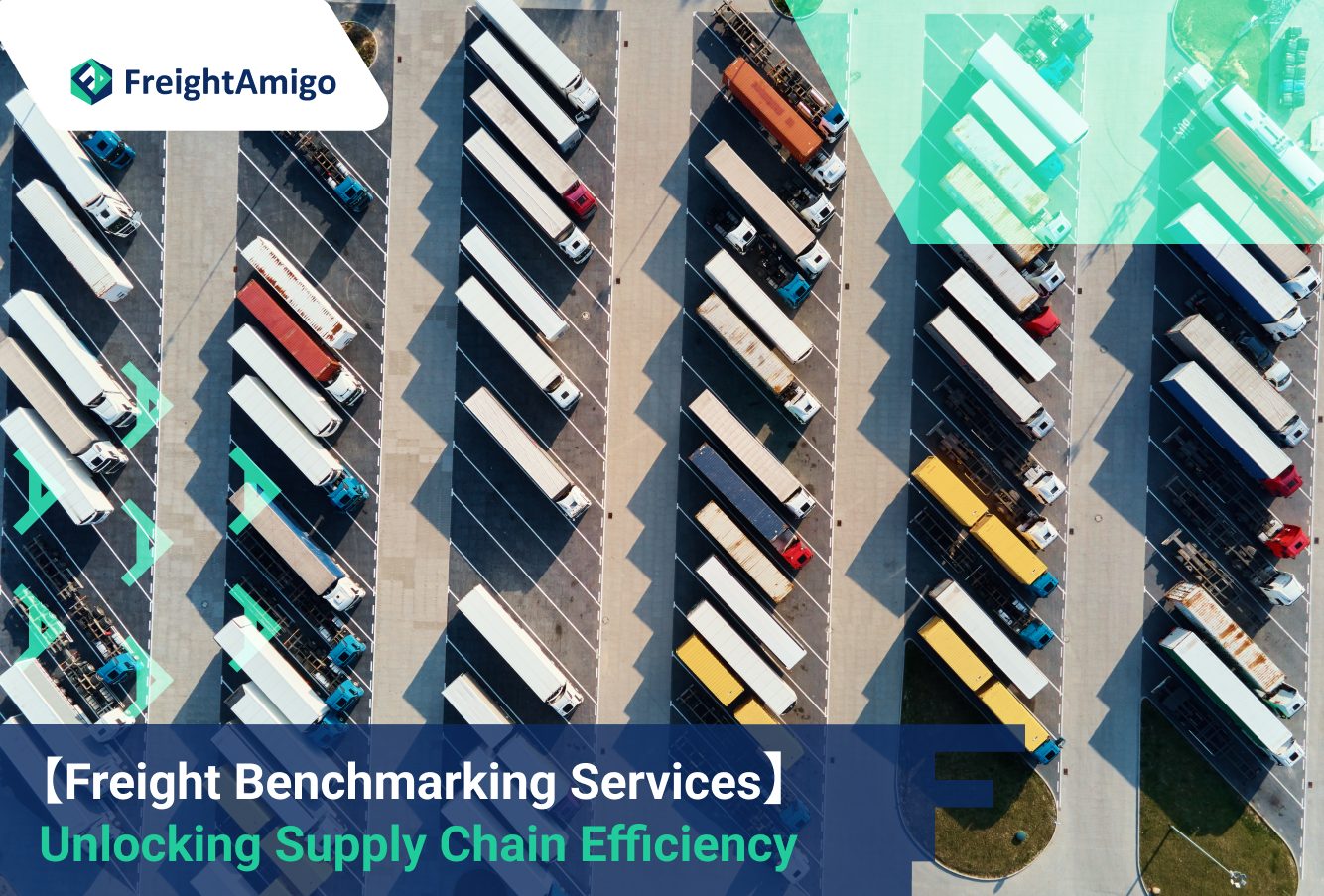Freight benchmarking is a critical process for companies in the logistics and supply chain management industry. It allows businesses to compare their performance and practices with industry peers and leaders, identify areas of improvement, and optimize their supply chain operations. In this comprehensive guide, we will explore the importance of freight benchmarking, the benefits it brings to businesses, and the best practices for effective benchmarking. So, whether you are a small player or a large corporation, this article will provide you with valuable insights on how to maximize your freight rates and drive efficiency in your supply chain.
Latest update on 29 January, 2024 by Aiden Ng– Marketing Analyst at FreightAmigo
Want to compare the best Express, Air Freight, Sea Freight, Rail Freight & Trucking rates so as to have better control on cost?
What is Freight Benchmarking?
Freight benchmarking is the practice of comparing a company’s freight rates and transportation processes against those of its peers in the same or similar industries. It involves analyzing key performance indicators (KPIs) and metrics related to costs, transportation times, storage, and other relevant factors. The goal is to gain a clear understanding of how a company’s freight costs and operations compare to industry standards and identify opportunities for improvement.
While freight benchmarking may sound simple in theory, it can be challenging to access reliable and up-to-date freight rate information. This is where freight benchmarking services, like Emerge, come into play. These services capture, analyze, and provide real-time market rates, empowering companies to negotiate with carriers from a stronger position and avoid overpaying for freight transportation.
Benefits of Freight Benchmarking
Freight benchmarking offers several valuable benefits for businesses in the logistics and supply chain industry. Let’s take a closer look at some of the key advantages:
-
Informed Freight Spending
One of the primary benefits of freight benchmarking is gaining clarity about your freight spending. By comparing your rates and services with industry peers, you can assess whether you are getting the level of service that justifies the prices you are paying. It enables you to answer critical questions like, “What is a reasonable range of rates for our company’s typical shipping scenarios?” This knowledge allows you to make more informed decisions about your freight spending and ensure that you are getting the best value for your money.
-
Optimized Trade Lane Rates
Whether you ship freight by air, land, or sea, understanding pricing norms for specific trade lanes is crucial. Freight benchmarking helps you establish target rates for vendors and ensures that you are not paying more than necessary for shipments along a given lane. Over time, you can gain insights into seasonal rate fluctuations and pricing trends, allowing you to predict and manage costs effectively. This proactive approach helps you navigate unforeseen events or crises with minimal warning, giving you a competitive edge over less-aware competitors.
-
Enhanced Decision-Making
Benchmarking provides valuable insights into your freight history, rates, and carrier performance. This information enables you to make better decisions about which carriers and trade lanes to use and when. For example, benchmarking can help you determine whether contract rates or spot rates are more advantageous for your business. It empowers you to negotiate balanced contracts with carriers and ensures that you don’t agree to terms that disadvantage your business. By leveraging benchmarking data, you can make strategic decisions that optimize your supply chain operations.
-
Improved Contractual Terms
Benchmarking helps you negotiate more favorable contractual terms with carriers. Armed with benchmarking data, you have a better understanding of industry standards and can ensure that your contracts are fair and competitive. You can negotiate rates and terms that align with your business needs and avoid falling victim to inflated tariffs. By using benchmarking as a precursor to freight tendering projects, you can enter contract negotiations from a position of strength, leading to more advantageous outcomes for your business.
Best Practices in Freight Benchmarking
Now that we understand the importance and benefits of freight benchmarking, let’s explore some best practices to ensure effective benchmarking. By following these practices, you can maximize the value of your benchmarking efforts and drive continuous improvement in your supply chain.
-
Define Common and Standardized Metrics
To benchmark effectively, it is crucial to establish common and standardized metrics that all parties can use for comparison. Ensure that all expense line items are defined consistently across the benchmarking process. This allows for accurate and meaningful comparisons between companies. By focusing on common metrics like operating ratio, revenue per truck per week, and gross fuel expense as a percentage of revenue, you can assess your performance relative to your competitors and identify areas for improvement.
-
Ensure Statistically Relevant Sample Size
To ensure the reliability and validity of your benchmarking analysis, it is essential to have a statistically relevant sample size. Aim for at least 30 data points to establish meaningful comparisons. The larger and longer the data set, the better your analysis will be. Given the seasonal nature of the trucking industry, having comprehensive and diverse data sets will enable you to account for fluctuations and make more accurate assessments of your performance.
-
Benchmark Against Relevant Peers
When benchmarking, it is crucial to compare your company to peers that operate in similar business models and have similar-sized operations. Benchmarking against companies in different regions, with different trailer types, or on different lanes can lead to faulty comparisons and skewed results. Ensure that the companies you benchmark against are relevant to your specific industry, trade lanes, and customer base. This will provide a more accurate assessment of your performance and allow for actionable insights.
-
Focus on Actionable Metrics
While benchmarking provides valuable insights, it is essential to focus on metrics that are within your control and can be changed based on your business model. Identify key metrics that drive your business’s success and develop actionable strategies to improve them. For example, instead of solely focusing on total revenue, consider revenue per driver per week as a more actionable metric. By understanding the drivers of your total revenue, you can identify opportunities for improvement on a per-unit basis and make targeted adjustments to drive better results.
-
Foster Extended Visibility and Collaboration
Benchmarking should not be limited to a few individuals or departments within your organization. To drive meaningful change and improvement, it is crucial to share benchmarking metrics and insights with all stakeholders. By providing extended visibility, you empower your employees to identify areas for improvement and contribute to the overall success of your supply chain. Foster a culture of collaboration and continuous improvement by making benchmarking data widely accessible and encouraging feedback from all levels of your organization.
Conclusion
Freight benchmarking is an essential practice for companies in the logistics and supply chain management industry. By comparing freight rates and operations against industry peers, businesses can gain valuable insights, optimize their supply chain, and drive efficiency. Benchmarking allows companies to make informed decisions about their freight spending, establish target rates for trade lanes, improve decision-making, and negotiate more advantageous contractual terms. By following best practices in freight benchmarking, companies can unlock the full potential of their supply chain, stay competitive, and drive continuous improvement. Start benchmarking your freight rates today and take your supply chain efficiency to new heights.
There are different options for cargo transportation. If you want to choose the most convenient and suitable solution, it is best to have the full support of logistics experts! If you are planning to ship goods overseas, please go to the FreightAmigo page for inquiries.
If you have any inquiries on logistics/supply chain, feel free to contact FreightAmigo now:
Chat with us online | Hotline: +852 28121686 | WhatsApp: +852 27467829









































